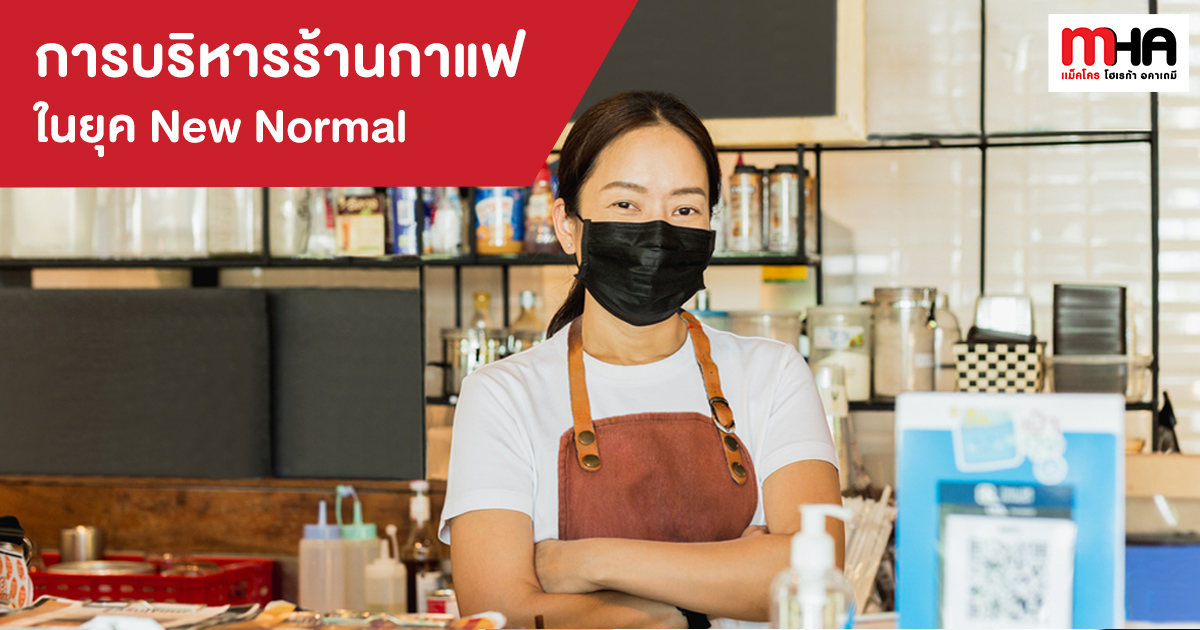Managing a Coffee Shop in the New Normal
How do coffee shop strategies have to change in order to survive in the new normal? In particular, tiny shops with limited seats still have to comply with government regulations. So, how do they break even or increase sales and become profitable? We have some guidelines to recommend you below.
If your concept is good, you will always have customers.
For coffee shops and cafés, if the concept is clear from the start, that advantage will add to your capital, because what customers want from coffee shops in addition to the flavors of their beverages is atmosphere. For example, some shops run with appropriate concepts like nature themes, forests, rice fields with great corners for taking pictures, and retro or even shops with baristas. These are all used as their selling points.
A shop with a clear concept and unique selling point will be easy to market, and there is a strong chance its customers share stories about the shop. So, examine your shop and identify your selling points. If you don’t have any yet, then create some. You can begin with the things you like or you can survey other shops and expand upon them.

At the moment, you need to be on guard and make sure your sanitation doesn’t drop.
Even though the country seems to be managing the COVID situation right now, it is possible to see many venues relaxing a lot more and dropping their guard or relaxing their rules. You have to be careful about this right now. If the disease starts spreading for a second time things will be severe. Therefore, no matter what, every COVID measure set by the government has to be followed by the shop. This includes registering customers, taking temperatures, maintaining 1-meter social distancing, having alcohol gel in stock, having employees wear masks covering the mouths and noses, wear gloves, get their temperatures taken before starting work, and maintaining shop and kitchen cleanliness without neglect. All of these measures are to maintain customer confidence.

If you haven’t dropped your guard, but your sales are declining due to following the measures, how do you need to change your strategies?
By following government specifications, the number of seats in your shop might be lower due to social distancing. As a result, your sales opportunities from customers sitting in your shop also decrease. Because the habit of customers in coffee shops is to sit for a long time, sales will definitely be affected when there are few seats and a low turning rate.
The solution to this is to boost sales by increasing the average price per capita. Consider creating set menu items to replace standalone beverages. Rather than letting customers sit and drink for a long time, do everything. Offer beverages, desserts and perhaps even savory meat dishes with prices calculated for cost, to the shop will profit without significantly raising sales prices.
Otherwise, add menu items for sitting and eating/drinking alone, take-home menu items, frozen menu items or meal kits that customers can take back and prepare at home. These are all ideas worth trying. Deliveries are also another source of income you need. You can either join a food delivery platform or deliver yourself to places nearby. Try offering promotions for deliveries to increase your sales numbers to meet the break-even point for the platform you join. Doing so will give your shop a better chance of being promoted by the platform for better awareness among your customers.
As for points coupons, from needing people to collect them until they have enough or forget about them or lose them, switch over to requiring customers to only buy up to a certain amount to immediately receive the privilege of buying something at special prices to make customers pay as much as possible.

If you know how to manage your employees, you will cut a lot of your labor expenses.
For small shops, the current situation might mean primarily relying on your own abilities to reduce your labor costs. For example, in some shops, the owner works as the barista or might set up a system for customers to pick up their own orders rather than being served. These are ways to cut labor costs.
However, if employees are still needed, what you need to consider is changing your work cycle. We recommend it as a technique. For example, some shops have employees work two shifts with sales beginning around 10:00 am and then closing at around 9:00 pm. With that in mind, you need to find out how many customers actually arrive in the morning.
Then you need to take a look at the moment before the shop closes and find out if customers are arriving around that time as well. Perhaps you can cut back to have your employees work only one shift with sales that used to begin at 10:00 am beginning at 11:00 am instead with closing time set at 8:00 pm. Otherwise, the starting time can be 10:30 am and the closing time can be 20:30 pm with two hours of break time for your employees. This can save you a lot on labor costs.
Thinking positively during this situation is a good thing as it allows entrepreneurs to learn about weaknesses and find ways to resolve them. Experience is a great way to build strength. This is because there is no set formula on how to run a restaurant or beverage shop, and constant, ceaseless learning, development and improvements are the way to success. We support every entrepreneur.
In addition, in order to promote success in entrepreneurs, we are ready to help you learn how to choose coffee shop locations and your target groups for each menu item. We also share some ideas on which menu items should be used as selling points and which pieces of equipment are appropriate for your needs, including how to select coffee beans and key ingredients and how to prepare some basic menu items.
Just watch and keep fighting to become the real deal. Click now to take free online courses!



